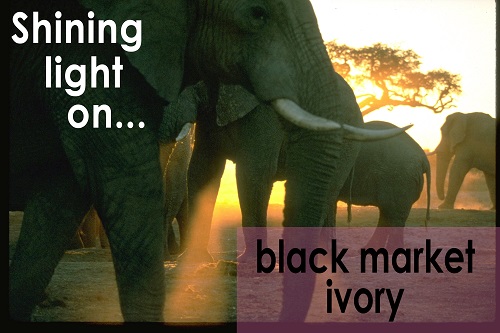 Last week, giant green stone crushers crunched and pulverized contraband ivory at a high-profile public awareness event set in the capital city of Sri Lanka, Colombo. At ivory crush events such as this one, energies are high and the ivory crushing is as loud as the statement it is making– illegal killing of elephants for ivory will not be tolerated.
Last week, giant green stone crushers crunched and pulverized contraband ivory at a high-profile public awareness event set in the capital city of Sri Lanka, Colombo. At ivory crush events such as this one, energies are high and the ivory crushing is as loud as the statement it is making– illegal killing of elephants for ivory will not be tolerated.

However, this time, afterwards the atmosphere quieted as it shifted into a religious ceremony honoring the deceased elephants, the first ceremony of its kind at an ivory crush event. Ministers of Buddhism, Hinduism, and Christianity offered prayers at the ceremony as the different faiths found common ground in standing against illegal wildlife trade, making the event truly remarkable.
This expression of unity is not the only valuable example Sri Lanka’s ivory crush offered for the future fight against the illegal trade in ivory. Government officials ensured that forensic investigations of the confiscated stockpile were complete before the destruction, providing detailed insight into the trade route that will help combat trafficking activities. Criminal networks behind this trade are complex, covered over by corruption and black market-operated. It will take a combination of collaborative investigations and intelligence sharing between countries and organizations to disband these networks.
Sri Lanka is now the first South Asian country to join the growing list of nations that have destroyed their ivory stockpiles. High rates of poaching have not been observed on the island; however, it serves as a transit hub for ivory from other countries. Sri Lanka’s public statement against the trade will serve as a warning against the black market in ivory conducted through its ports. Every nexus of the black market trade shut down is a step towards healthy elephant populations.
Regarding the ivory crush, Dr. Shermin de Silva, long-time grantee through the Asian Elephant Conservation Fund, remarked, “It is very heartening that after a long period of uncertainty about the future of the confiscated tusks, they have been put to rest in a most fitting way. I commend the Sri Lankan authorities, religious leaders, and public for demonstrating empathy for elephants and showing the world that such crimes will not be tolerated.
We’ve supported Dr. Shermin de Silva in her committed, long-term work studying the social habits, demographics, and ecological behavior of wild, free-ranging elephants in Udawalawe National Park (UWNP), Sri Lanka. Dr. de Silva and her team are intimately familiar with the herd of 600 elephants they study, following some of them from birth to adulthood and identifying each by attributes as specific as the grooves and notches in their ears.

Along with leading this project, Dr. De Silva has served as a steady voice of hope and awareness-raising for Asian elephants globally, inspiring positive action on behalf of this species to ensure its survival.
Sri Lankan elephants in Udawalawe National Parkby Cory Brown, USFWS.
The role humanity has played in the unsustainable destruction of wild elephant populations casts a shadow on the environmental history of our planet; however, public awareness events such as ivory crushes, research and conservation efforts by people such as Dr. de Silva, as well as forensic investigations and law enforcement tactics, shine a light on the situation and offer hope and guidance for the future fight against the illegal wildlife trade. We will continue to work together and support all nations in our common purpose of protecting elephant populations around the world.
Photos from the Sri Lanka ivory crush event can be found in this CITES Flickr album.
— Betsy Painter, International Affairs
